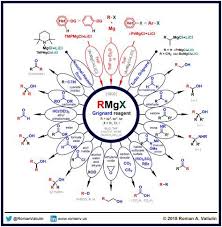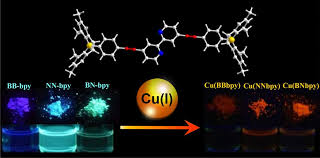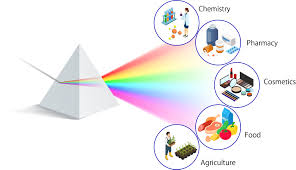MSc III SEM Organic chemistry
Only 6 Units
- Teacher: Resmi M. R.
- Teacher: Dr.Binitha.N.N _GCP
- Teacher: Roy.K.B _GCP
- Teacher: Usha.M _GCP
- Teacher: Dr. Surendran Parambadath GCP_Chem
- Teacher: Dr. P. Venugopalan
- Teacher: Dr.Binitha.N.N _GCP
- Teacher: Dr. Anjaly Mathew _GCP
- Teacher: Dr.Binitha.N.N _GCP
- Teacher: Ramlath K T _GCP
- Teacher: Usha.M _GCP
- Teacher: Remani K. C.
- Teacher: Resmi M. R.
- Teacher: Dr.Binitha.N.N _GCP
Green nanotechnology refers to the use of nanotechnology to enhance the environmental sustainability of processes producing negative externalities. It also refers to the use of the products of nanotechnology to enhance sustainability. It includes making green nano-products and using nano-products in support of sustainability.

- Teacher: Resmi M. R.
- Teacher: Roy.K.B _GCP
- Teacher: Usha.M _GCP
A reagent is a substance or compound added to a system to cause a chemical reaction, or added to test if a reaction occurs. The terms reactant and reagent are often used interchangeably—however, a reactant is more specifically a substance consumed in the course of a chemical reaction. Solvents, though involved in the reaction, are usually not called reactants. Similarly, catalysts are not consumed by the reaction, so they are not reactants. In biochemistry, especially in connection with enzyme-catalyzed reactions, the reactants are commonly called substrates.

- Teacher: Dr. Surendran Parambadath GCP_Chem
- Teacher: Dr. P. Venugopalan
- Teacher: Dr.Binitha.N.N _GCP
- Teacher: Dr.Manoj.T.P _GCP
Organometallic chemistry is the study of organometallic compounds, chemical compounds containing at least one chemical bond between a carbon atom of an organic molecule and a metal, including alkaline, alkaline earth, and transition metals, and sometimes broadened to include metalloids like boron, silicon, and tin, as well.
Bioinorganic chemistry is a field that examines the role of metals in biology. Bioinorganic chemistry includes the study of both natural phenomena such as the behavior of metalloproteins as well as artificially introduced metals, including those that are non-essential, in medicine and toxicology. Many biological processes such as respiration depend upon molecules that fall within the realm of inorganic chemistry. The discipline also includes the study of inorganic models or mimics that imitate the behaviour of metalloprotein

- Teacher: Dr. Anjaly Mathew _GCP
- Teacher: Ramlath K T _GCP
Spectroscopy /spɛkˈtrɒskəpi/ is the study of the interaction between matter and electromagnetic radiation (via electron spectroscopy, atomic spectroscopy, etc).
Spectroscopy /spɛkˈtrɒskəpi/ is the study of the interaction between matter and electromagnetic radiation (via electron spectroscopy, atomic spectroscopy, etc).[1][2][3][4][5][6] Historically, spectroscopy originated through the study of visible light dispersed according to its wavelength, by a prism. Later the concept was expanded greatly to include any interaction with radiative energy as a function of its wavelength or frequency, predominantly in the electromagnetic spectrum, although matter waves and acoustic waves can also be considered forms of radiative energy; recently, with tremendous difficulty, even gravitational waves have been associated with a spectral signature in the context of the Laser Interferometer Gravitational-Wave Observatory (LIGO) and laser interferometry. Spectroscopic data are often represented by an emission spectrum, a plot of the response of interest, as a function of wavelength or frequency.

- Teacher: Remani K. C.
- Teacher: Resmi M. R.
- Teacher: Dr.Binitha.N.N _GCP
- Teacher: Dr.Manoj.T.P _GCP
